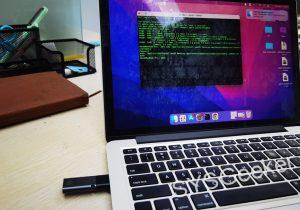Table of Contents
If you’re using a Mac, you know that storage space is precious. Over time, your Mac’s hard drive can become cluttered with large files that take up valuable space, slowing down your system’s performance. Identifying and deleting large files can help you free up space, improve your Mac’s performance, and make it easier to find the files you need. In this outline, we will explore the various ways to find and delete large files on a Mac. Additionally, we’ll provide tips on how to manage large files and prevent the accumulation of unnecessary data on your Mac. By following these steps, you can keep your Mac running smoothly and efficiently, while maximizing your storage space.
Why You Need to Find and Delete Larger Files on Mac?
There are several reasons why you need to find and delete larger files on a Mac:
Free up storage space: Large files such as videos, music, and photos can take up significant space on your Mac’s hard drive, leaving you with limited storage for other files and applications.
Improve system performance: When your Mac’s hard drive is full, it can slow down the system’s performance and cause programs to run slowly or crash. Deleting large files can help improve your Mac’s speed and performance.
Easier file management: When your hard drive is cluttered with large files, it can be difficult to locate the files you need. By deleting unnecessary files, you can make it easier to manage your files and find what you’re looking for.
Avoid data loss: If your hard drive is nearly full, you run the risk of losing important files due to lack of storage space. By deleting unnecessary large files, you can ensure that you have enough space to store important files and avoid data loss.
How to Locate Large Files on a Mac
Before you can delete large files on your Mac, you need to identify them. Here are a few ways to do so:
-
A. Using Finder:
- Open Finder and navigate to the folder or drive where you want to search for large files.
- In the top right corner, click on the search bar and type in a size qualifier, such as "size:>=500MB" to find files that are larger than 500MB.
- You can also use other qualifiers such as KB or GB depending on your needs.
- Finder will display all files that meet the size criteria you specified.
-
B. Using Spotlight:
- Click on the magnifying glass icon in the top right corner of your screen to open Spotlight search.
- Type in a size qualifier, such as "size:>=500MB" in the search bar.
- Spotlight will display all files that meet the size criteria you specified.
-
C. Using Terminal:
- Open Terminal by searching for it in Spotlight or navigating to Applications > Utilities > Terminal.
- Type in the command "find / -type f -size +500M -print" to find files larger than 500MB.
- You can adjust the size parameter to fit your needs.
- Terminal will display all files that meet the size criteria you specified.
By using these methods, you can easily identify large files on your Mac and determine which files you want to delete to free up space.
Deleting Large Files on a Mac
Once you have identified large files on your Mac, you can delete them to free up space. Here are a few methods to delete large files:
-
A. Moving Files to Trash:
- Select the large files you want to delete in Finder.
- Drag the files to the Trash icon in the Dock, or right-click and select "Move to Trash."
- To permanently delete the files, right-click on the Trash icon and select "Empty Trash."
-
B. Permanently deleting files:
- Select the large files you want to delete in Finder.
- Hold down the "Option" key and right-click on the Trash icon.
- Select "Empty Trash" to permanently delete the files.
-
C. Using third-party apps for bulk deletion:
Install a third-party app such as CleanMyMac, which can help you identify and delete large files. The app will display all large files on your Mac and give you the option to delete them in bulk.
It’s important to note that deleting large files can sometimes cause issues with certain applications or operating system processes. Before deleting any files, make sure to double-check that they are not needed for your system or applications to function properly.
Manage Large Files on a Mac
In addition to deleting large files, it’s important to manage them to prevent the accumulation of unnecessary data on your Mac. Here are a few tips for managing large files:
- A. Use cloud storage services:
Consider using cloud storage services such as Dropbox, iCloud, or Google Drive to store large files such as photos, videos, and documents. This will free up space on your Mac’s hard drive and provide easy access to your files from any device.
- B. Regularly backup important files:
Backing up important files regularly can prevent data loss in case of a hardware failure or other issue. Consider using Time Machine or other backup software to create regular backups of your important files.
- C. Use disk cleanup tools:
Disk cleanup tools such as CleanMyMac can help you identify and delete unnecessary files on your Mac, including large files that may be taking up space.
- D. Organize files into folders:
Organizing files into folders can make it easier to manage and find files on your Mac. Consider organizing files by type, project, or date to make them easier to locate.
- E. Use external storage devices:
Consider using external storage devices such as external hard drives or USB drives to store large files that you don’t need to access regularly. This can free up space on your Mac’s hard drive and provide an additional backup option.
By following these tips, you can effectively manage large files on your Mac and prevent them from taking up unnecessary space.
Preventing Accumulation of Large Files on a Mac
Preventing the accumulation of large files on your Mac can help maintain its performance and free up space on your hard drive. Here are a few tips for preventing the accumulation of large files:
- A. Regularly delete unnecessary files:
Regularly deleting unnecessary files such as old documents, downloads, and media can help prevent the accumulation of large files on your Mac. - B. Use streaming services:
Instead of downloading large media files such as movies or music, consider using streaming services such as Netflix or Spotify to access your favorite content without taking up space on your hard drive. - C. Compress files:
Compressing large files such as videos or images can help reduce their size and free up space on your hard drive. Consider using a compression tool such as WinZip or 7-Zip to compress large files. - D. Monitor downloads:
Be mindful of the files you download and make sure to delete any unnecessary files after they have been used. - E. Regularly empty the trash:
Emptying the trash regularly can help prevent the accumulation of large files on your hard drive. Consider setting up your Mac to automatically empty the trash after a certain period of time.
By following these tips, you can prevent the accumulation of large files on your Mac and maintain its performance and storage capacity.
How to Find What Files Are Taking up Space Mac?
To find what files are taking up space on a Mac, you can use the built-in storage management tool. Here’s how:
- Click on the Apple logo in the top left corner of the screen.
- Select "About This Mac" from the drop-down menu.
- Click on the "Storage" tab.
- You’ll see a breakdown of the files taking up space on your Mac, including categories such as "Applications," "Documents," and "Media." Click on any of these categories to see a list of specific files and their sizes.
To delete a file, simply click on it and then click the "Delete" button.
Alternatively, you can use a third-party disk cleanup tool such as CleanMyMac or CCleaner for Mac to identify and delete files taking up space on your Mac.
You can also manually search for large files by opening Finder and using the search bar to search for files larger than a specific size. For example, you can search for files larger than 1GB by typing "size:>1GB" in the search bar.
In Conclusion
Finding and deleting large files on your Mac is an easy way to free up space. Just remember to be careful when deleting files, as you don’t want to accidentally delete something important. With the steps outlined above, you should be able to quickly find and delete large files on your Mac.

